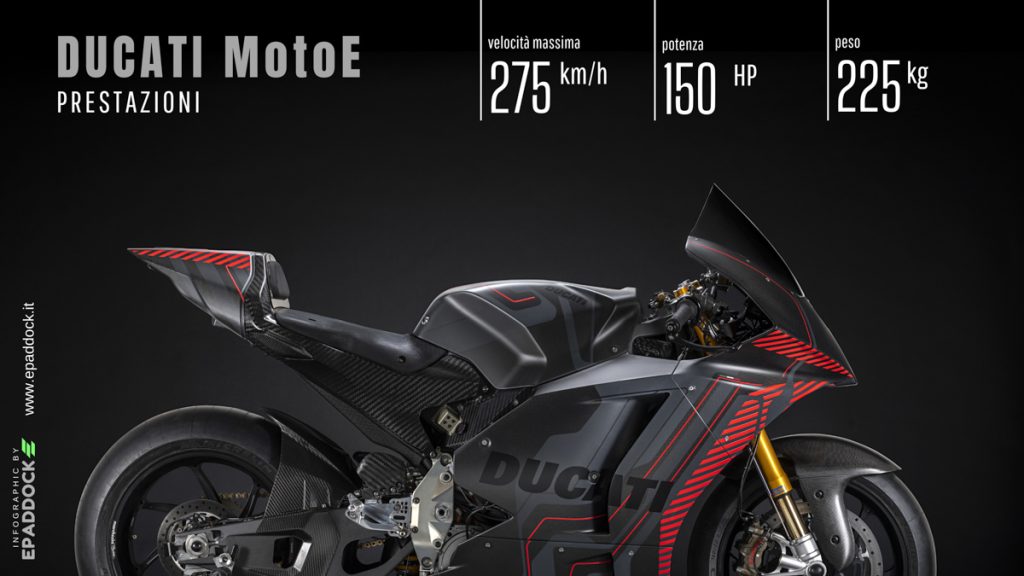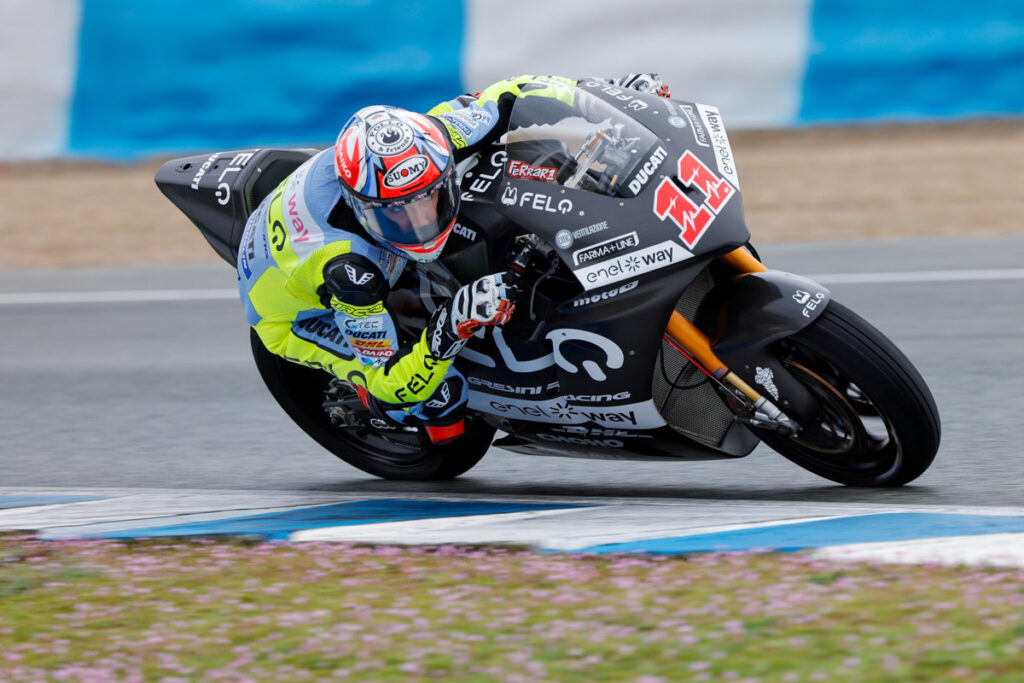
On the eve of the new test of the MotoE 2023, this time in Barcelona, we asked Matteo Ferrari, rider of the FELO Gresini Racing MotoE Team, how the new Ducati V21L, the real novelty of the 2023 MotoE World Championship, performs on track.
In the first test of the MotoE 2023, Matteo Ferrari immediately found a good feeling with the new electric Ducati and finished the three days in Jerez in second position with a time of 1:47.310, just 0.257sec from the leader. The rider from Rimini managed to be competitive both on wet and dry track and with the mixed conditions of the second and third days. A few days before the second test session, this time in Barcelona, we contacted him to find out how to ride this new MotoE; here's what he told us.
“Definitely positive first test of the season, we worked well and collected important data. We managed to be competitive in all conditions and this is fundamental for me. On the third day we rode very little due to the difficult conditions but we were still able to test the Traction and some modifications to the bike without searching for the best time. We finished this first test in the second position in both dry and wet conditions, so I'm very happy. My team and Ducati did a great job in that test. The base of the bike is of the highest level.”
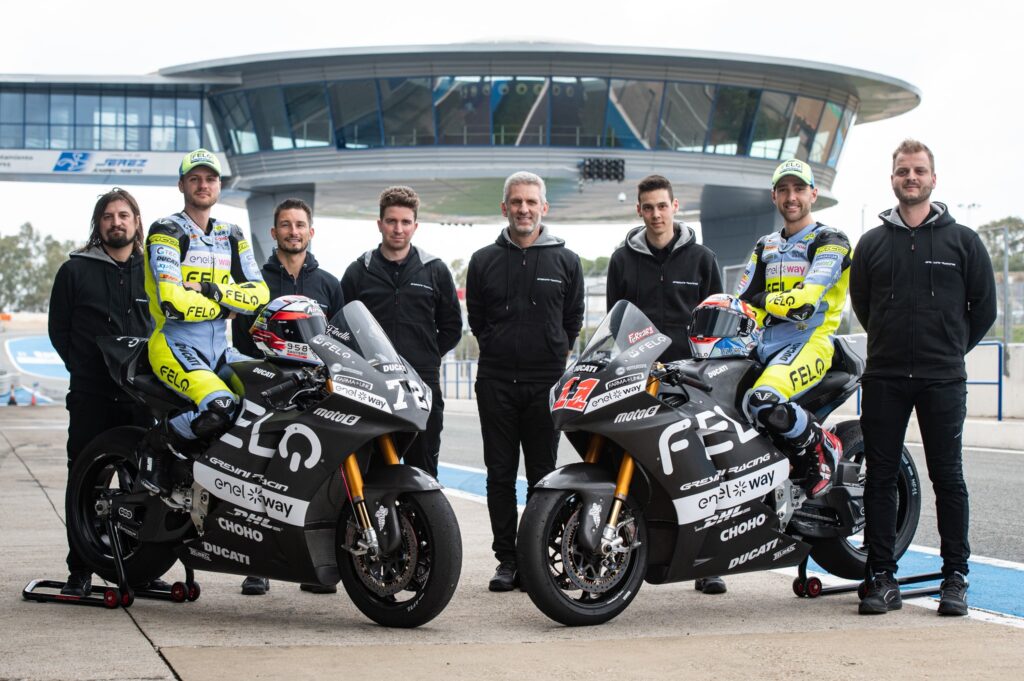
What is the area you have worked on the most, considering the limitations caused by the rain?
“We focused a lot on the electronics, finding the right configuration will be important this year. There are three electronic controls on which the teams can work: Traction Control, Ride-by-Wire and Engine Brake and each is associated with three dry maps and three wet maps. The choice between the different maps depends a lot on the riding style of the rider.
The two most important controls of the MotoE we focused on are the Traction Control and the Ride-by-Wire.
Ride-by-Wire is throttle control. Based on the map, you choose the level of torque and power generated by the motor but also the output curve. Usually, in the wet, the function between the opening of the throttle and the motor output is not linear, but it is like a curve; first it increases slowly and then surges the more you turn the accelerator. In the dry, this curve is a little straighter even if it's difficult to get a straight line.”
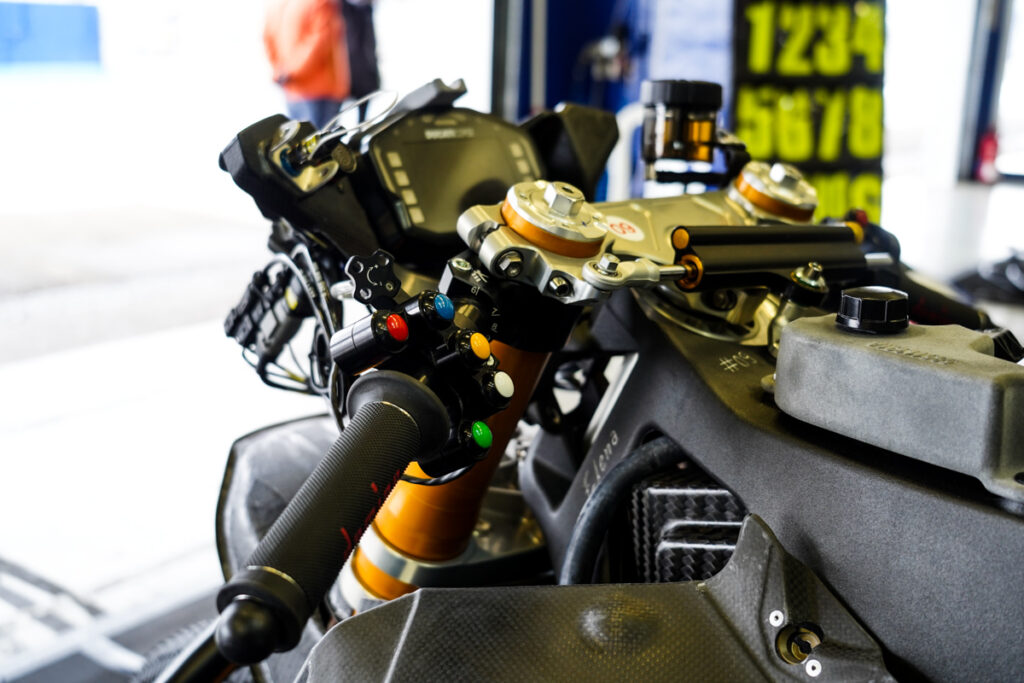
“Ducati MotoE, even in the dry, has a very gentle output curve; it's not hard. This means that even if you give full throttle immediately, the motor responds progressively, almost with a delay. It is as if the bike responds more gradually than to the throttle command. Last year, for example, this system didn't exist, the accelerator was directed with the motor and it was the rider who had to ask the bike for the right torque. Now, however, the control is less linear; the bike intervenes if you're asking for too much power compared to the conditions it detects.
Another positive aspect of Ducati's electronics is that if you exaggerate with the gas, the bike understands it and saves you. This is especially important with an electric motorcycle that has a lot of torque. On the opposite side, if you want to make a difference and use the tire at its limit, it's hard to do that when you have very active controls.
It's true that they help you, and you rely on them, but when there are too many, in the end, the bike il less fast. Even if you cornered well and raised the bike quickly, it still doesn't accelerate out of corners as it would when you have less control.
Different riders have different styles that fit more or less with the electronic controls. For example, when I rode superbikes, I always chose very few controls. The ones we tried in the Jerez test were very conservative controls, and in fact, all the riders asked for less. In the wet, even turning the throttle fully with the bike leaned, it was impossible to crash. Ducati probably wanted us to start with somewhat controlled maps because already, on the third day, they gave us different maps, which they had evidently already prepared."
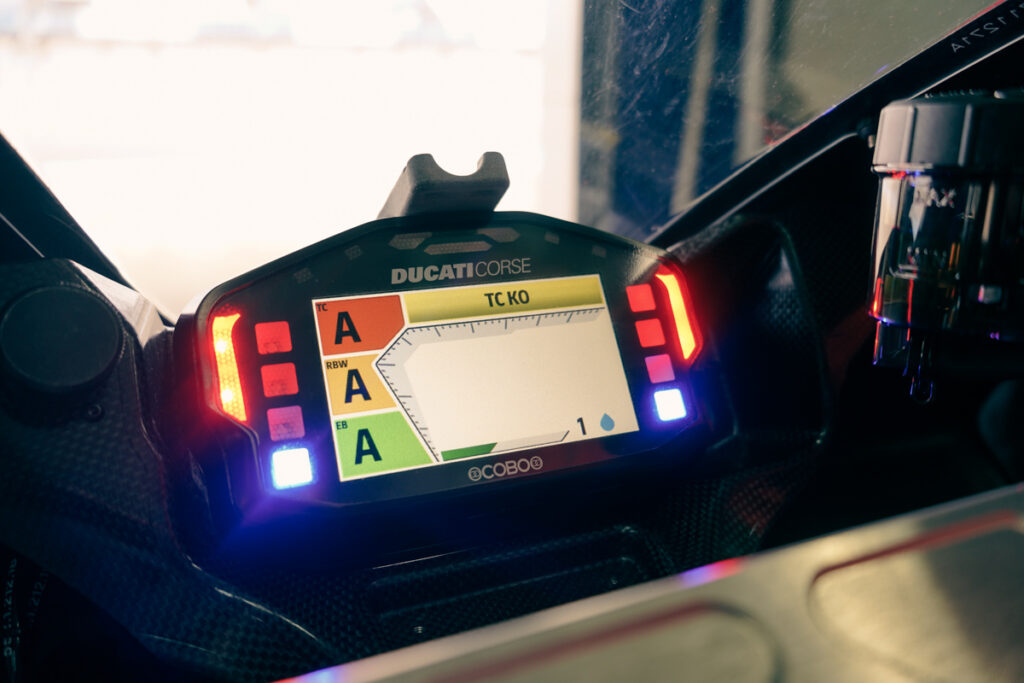
What is the difference between the Traction Control and the Ride-by-Wire?
“The Traction Control and the Ride-by-Wire are two very different controls. The first prevents the rear wheel from slipping, the second adjusts the motor output according to the rotation of the accelerator command. You could have, for example, very little Traction Control and a lot of Ride-by-Wire, it depends on the style of the rider.
Normally, in the other categories, each rider makes his own maps, let's say three, and then alternates them according to the track conditions. In MotoE, we also have three maps, but they are set in advance by Ducati, and they are made to suit more or less everyone, so they will suit some better, and others worse. Some will like the maps as Ducati has prepared them and some will want them freer or more restrained, but there's nothing you can do about it.
During the tests in Jerez I was able to try all three maps in both dry and wet conditions. As the conditions were constantly changing, in the wet, we took advantage of all three. On the other hand, in the dry, I tried all three in the same way but then I always went with A maps, the ones with less control, while the C maps are the ones where the controls are more.”
What is the third map?
“It's that of the Engine Brake, or motor brake. I haven't changed that much; I've always been on the intermediate one, the B, I immediately got on well with that. Compared to the other controls, here the map labels are the opposite: of the three maps available, A is the one with the most engine brake while C is the one with the least."
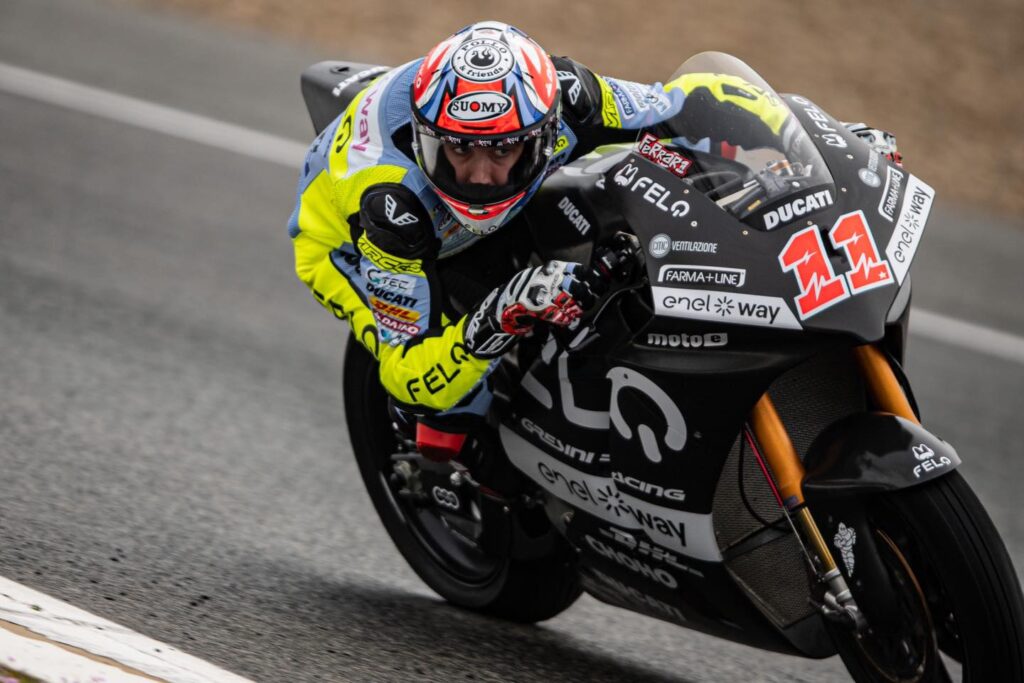
How does a rider use these electronic controls over a race?
“So, during a race, we start with new tires and, therefore, with maximum grip. There, map A is the right map for engine braking. During the race, tire performance drops, so you switch to map B, because the rear tire has lost grip compared to the start. Without changing the map, the engine brake would ask the tire for more than it could handle, and therefore the bike would be unstable under braking. Reducing the engine brake, that does not happen and the bike is more stable. Then, over the race, you have to gradually reduce the controls; in our case, since the race is short, we stop at C map.
Same thing, but in reverse, for the Traction Control, which, over the race, must be decreased, going from C to A. When the tire wears out, it tends to slip more, and if the Traction Control intervenes a lot, the bike doesn't accelerate. For this reason, lap after lap, the Traction Control must be decreased so that the rider, with his sensitivity, is able to manage the limit of the bike".
So unlike in the past, you can now change maps while on the track, is it?
“Yes, exactly, with the buttons on the left handlebar. However, the switch from wet to dry maps and vice versa can only be done from the pits for safety reasons. The dimensions of the dry and wet tires are different; therefore, it is important not to set the wrong maps; otherwise, the controls work anomalously.”
Moving away from the electronics theme, what are the riding phases in which you found yourself best with this bike?
“At the top of the list I put braking and corner entry, especially in the fast ones. Last year, due to the weight of the bike, it was not natural to enter the corners strongly; you had to trust and go, especially if there was little grip or wind. This year's bike, on the other hand, is very intuitive and progressive when leaning into corners; he immediately gives you confidence and communicates all the different sensations well. This is very important, and we have seen it from the data, which show that we immediately went better in the fast corners."
Can you feel the improved fork displacement?
“Yes yes, that feels a lot, thanks also to the lower weight of the bike. You can brake further ahead of last year's benchmarks. I felt good when braking, thanks to the very large disc and the cooling fins. In these first tests we have noticed that the pads, which are of the same model as last year, last much longer with the ventilated disc and with the bike weighing less."
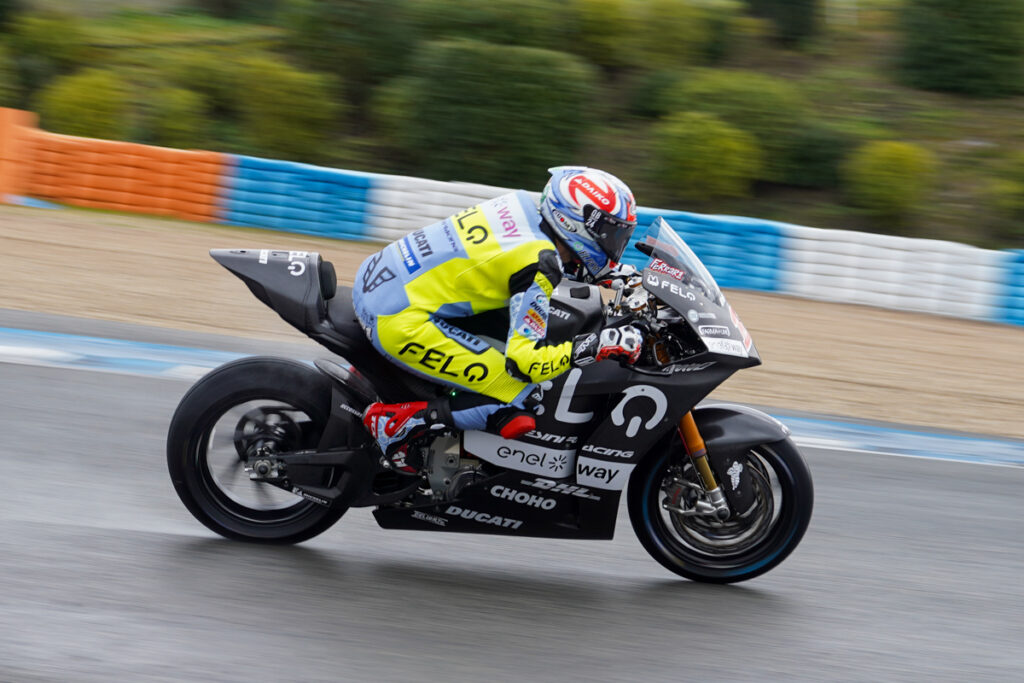
The ergonomics? Is it that of a traditional motorcycle?
“Yes and personally I found myself very well. It's one of those very rare times that I get on a motorbike and change nothing. Height of the footpegs, opening or closing of the handlebars. Nothing, everything was perfect from the beginning."
And the new electronic rear brake?
“Eh, this is something that all of us riders have yet to fully understand because it has a slightly different behaviour. It is somewhat similar to the additional Engine Brake of last year's bike, but this one, by detecting the pressure exerted with the foot, is progressive, while that was on/off. The fact of not having the disc, the caliper and so on allows us to save some weight, but the dynamic effect of the disc is missing because the braking action is by the motor. I still have to figure out how to use it and how it interacts with the engine brake. I'll work on it in Barcelona in a few days."
The FELO Gresini Racing team MotoE, along with the other teams of the MotoE 2023, they will be back in action from 3 to 5 April at the Circuit de Barcelona-Catalunya to further refine their bikes in view of the first round of the FIM Enel MotoE World Championship in Le Mans France, from 12 to 13 May.
This is the combined standings of the MotoE in the three days of testing in Jerez:
| POS. | N. | Nat. | Rider | Team | Time |
|---|---|---|---|---|---|
| 1 | 51 |  |
Eric GRANADO | LCR E-Team | 1,47.053 |
| 2 | 11 |  |
Matteo FERRARI | FELO Gresini MotoE | 1,47.310 |
| 3 | 29 |  |
Nicholas SPINELLI | Pons Racing 40 | 1,47.478 |
| 4 | 40 |  |
Mattia CASADEI | Pons Racing 40 | 1,47.504 |
| 5 | 3 |  |
Randy KRUMMENACHER | Dynavolt Intact GP MotoE | 1,47.524 |
| 6 | 78 |  |
Hikari OKUBO | TECH3 E-Racing | 1,47.526 |
| 7 | 81 |  |
Jordi TORRES | Openbank Aspar Team | 1,47.548 |
| 8 | 34 |  |
Kevin MANFREDI | Ongetta Sic58 Squadra Corse | 1,47.638 |
| 9 | 4 |  |
Hector GARZO | Dynavolt Intact GP MotoE | 1,47.695 |
| 10 | 77 |  |
Miquel PONS | LCR E-Team | 1,47.810 |
| 11 | 53 |  |
Tito RABAT | Prettl Pramac MotoE | 1,48.043 |
| 12 | 23 |  |
Luca SALVADORI | Prettl Pramac MotoE | 1,48.159 |
| 13 | 61 |  |
Alessandro ZACCONE | TECH3 E-Racing | 1,48.219 |
| 14 | 21 |  |
Kevin ZANNONI | Ongetta Sic58 Squadra Corse | 1,48.620 |
| 15 | 19 | #AT | #AT | 1,48.795 | |
| 16 | 8 |  |
Mika PEREZ | RNF MotoE Team | 1,49.737 |
| 17 | 72 |  |
Alessio FINELLO | FELO Gresini MotoE | 1,49.881 |
| 18 | 6 |  |
Maria HERRERA | Openbank Aspar Team | 1,49.934 |
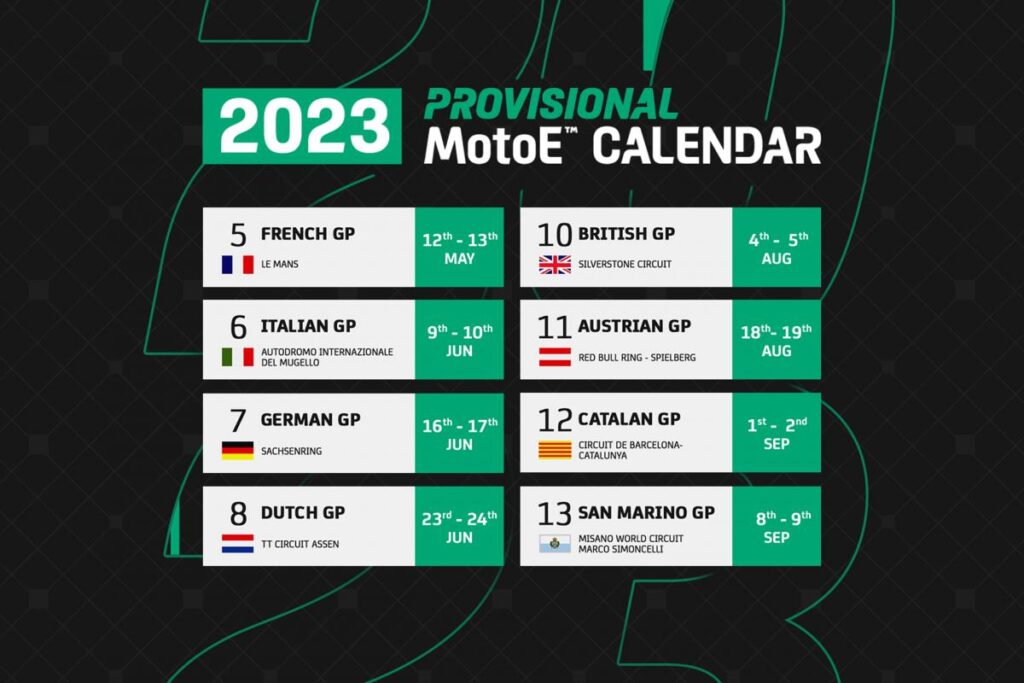
MotoE World Championship
The calendar of the MotoE 2023

To be updated on the MotoE World Championship, subscribe to Epaddock's Whatsapp broadcast and receive all our news for free on your mobile phone in real time: find out how here.



